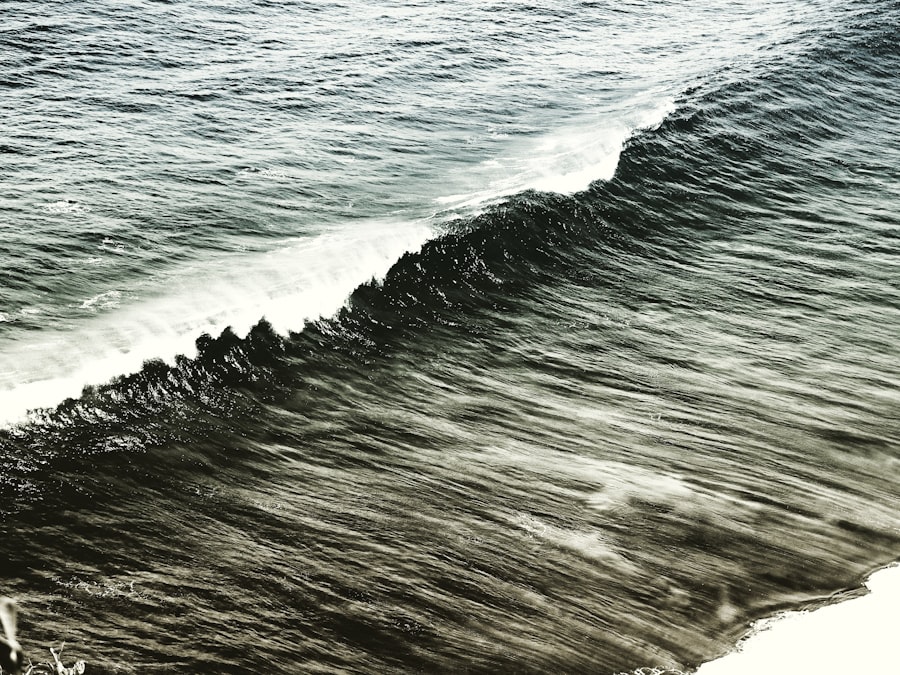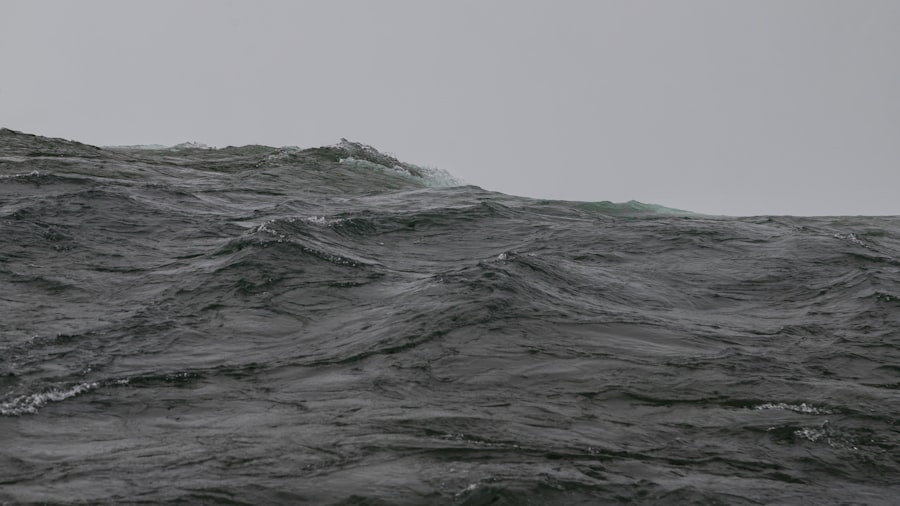The Drake Passage, a body of water that separates South America from Antarctica, is renowned for its tumultuous seas and unpredictable weather. Stretching approximately 800 kilometers (500 miles) from Cape Horn to the Antarctic Peninsula, it is often regarded as one of the most challenging maritime routes in the world. The passage is not only significant for its geographical location but also for its ecological importance, serving as a critical corridor for marine life and a vital area for scientific research.
The confluence of the Atlantic and Pacific Oceans creates a unique environment that is both awe-inspiring and formidable. Navigating the Drake Passage is an experience that many adventurers seek, drawn by the allure of its wild beauty and the promise of encountering some of the planet’s most pristine ecosystems. However, it is essential to understand that this journey is not for the faint-hearted.
The waters can be notoriously rough, with waves reaching heights of up to 15 meters (50 feet) during storms. This unpredictability has earned the passage a reputation that both intimidates and excites those who dare to traverse it. For many, crossing the Drake Passage is a rite of passage, a testament to their adventurous spirit and desire to explore the remote corners of the Earth.
Key Takeaways
- The Drake Passage is a treacherous body of water between South America and Antarctica known for its unpredictable and rough seas.
- Proper preparation for the journey includes packing warm clothing, seasickness medication, and being mentally prepared for the challenging conditions.
- Choosing the right vessel is crucial for a safe and comfortable passage, with considerations for size, stability, and experienced crew.
- Navigating the weather in the Drake Passage requires constant monitoring and adaptation to changing conditions to ensure a safe journey.
- Safety measures such as life jackets, emergency drills, and experienced guides are essential for a smooth and secure passage through the Drake Passage.
Preparing for the Journey
Preparation for a journey across the Drake Passage requires careful planning and consideration. Travelers must equip themselves with appropriate gear, ensuring they are ready for the harsh conditions that can arise. Layering clothing is crucial; thermal undergarments, waterproof outer layers, and sturdy footwear are essential to keep warm and dry.
Additionally, packing essentials such as sunscreen, sunglasses, and hats is vital, as even in cold climates, UV rays can be intense. A well-prepared traveler will also consider personal items like medications, cameras, and journals to document their experiences. Beyond physical preparation, mental readiness plays a significant role in ensuring a successful journey.
Understanding the challenges that lie ahead can help travelers cultivate a positive mindset. Engaging in research about the passage, its history, and its wildlife can enhance appreciation for the experience. Moreover, connecting with fellow travelers through forums or social media can provide valuable insights and tips from those who have previously navigated these waters.
This sense of community can foster excitement and camaraderie, making the journey even more enriching.
Choosing the Right Vessel

Selecting the appropriate vessel for traversing the Drake Passage is a critical decision that can significantly impact the overall experience. Various types of ships are available, ranging from large cruise liners to smaller expedition vessels. Larger ships often provide more amenities and comfort but may lack the agility needed to navigate rough waters effectively.
In contrast, smaller vessels offer a more intimate experience and can access areas that larger ships cannot reach, allowing for unique wildlife encounters and breathtaking scenery. When choosing a vessel, travelers should consider factors such as stability, crew expertise, and onboard facilities. A well-equipped ship with experienced crew members can make all the difference in ensuring safety and comfort during turbulent conditions.
Ultimately, selecting the right vessel involves balancing comfort with adventure, ensuring that travelers can fully immerse themselves in the wonders of the Drake Passage while feeling secure in their journey.
Navigating the Weather
| Weather Condition | Navigation Metric |
|---|---|
| Clear skies | High visibility, low risk of turbulence |
| Cloudy | Reduced visibility, potential for turbulence |
| Rain | Reduced visibility, increased risk of turbulence |
| Snow | Low visibility, potential for icing |
Weather conditions in the Drake Passage can change rapidly and dramatically, making it essential for travelers to stay informed and adaptable. The region is known for its fierce winds and sudden storms, which can create challenging sailing conditions. Understanding how to interpret weather forecasts and recognizing signs of changing weather patterns can empower travelers to make informed decisions during their journey.
Many expedition companies provide daily briefings on weather conditions, allowing passengers to prepare for what lies ahead. Travelers should also be aware of seasonal variations in weather patterns when planning their trip. The summer months from November to March generally offer milder conditions and longer daylight hours, making it an ideal time for exploration.
However, even during these months, unexpected storms can occur. Being mentally prepared for potential changes in itinerary due to weather-related challenges is crucial for maintaining a positive experience. Embracing the unpredictability of nature can lead to unexpected adventures and unforgettable memories.
Safety Measures
Safety should always be a top priority when embarking on a journey through the Drake Passage. Travelers must familiarize themselves with safety protocols established by their vessel’s crew. This includes understanding emergency procedures, knowing where life jackets are located, and participating in safety drills upon boarding.
A well-prepared traveler will also take personal responsibility for their safety by adhering to guidelines provided by experienced crew members. In addition to following onboard safety measures, travelers should also consider their personal health and well-being during the journey. Staying hydrated, eating nutritious meals, and getting adequate rest are essential components of maintaining good health at sea.
Furthermore, travelers should be aware of their limits and communicate any concerns or discomforts to crew members promptly. By prioritizing safety and well-being, travelers can fully enjoy their adventure while minimizing risks associated with navigating the Drake Passage.
Wildlife Encounters

One of the most captivating aspects of traversing the Drake Passage is the opportunity to encounter diverse wildlife in their natural habitats. The waters are teeming with life, including various species of whales, seals, and seabirds that thrive in this rich ecosystem. Travelers may have the chance to spot majestic humpback whales breaching the surface or playful orcas swimming alongside their vessel.
The sight of these magnificent creatures in their natural environment is often a highlight of any journey through this region. Birdwatchers will also find delight in observing numerous seabird species that inhabit the area. Albatrosses glide gracefully over the waves, while petrels dart playfully through the air.
Many expedition vessels offer guided wildlife watching excursions led by knowledgeable naturalists who provide insights into the behaviors and habitats of these animals. Engaging with experts enhances the experience and fosters a deeper appreciation for the delicate balance of life in this remote part of the world.
Sea Sickness Management
For many travelers, sea sickness poses a significant challenge when crossing the Drake Passage. The unpredictable nature of the waters can lead to discomfort for even seasoned sailors. To mitigate this issue, it is advisable for travelers to take preventive measures before embarking on their journey.
In addition to medication, employing natural remedies can also be beneficial in managing sea sickness. Ginger tea or ginger candies are popular choices among travelers seeking relief from nausea.
Staying hydrated and consuming light meals can further help maintain comfort during rough seas. Finding a stable spot on deck or focusing on the horizon can also assist in reducing feelings of motion sickness. By being proactive about sea sickness management, travelers can enhance their enjoyment of the journey across the Drake Passage.
Capturing the Beauty
The breathtaking landscapes encountered while navigating the Drake Passage provide ample opportunities for photography enthusiasts to capture stunning images. From dramatic seascapes to towering icebergs glistening in sunlight, every moment presents a chance to document nature’s artistry. Travelers should come prepared with high-quality cameras or smartphones equipped with good lenses to capture these unforgettable scenes.
To make the most of photography opportunities, it is essential for travelers to familiarize themselves with their equipment before setting sail. Understanding how to adjust settings for varying light conditions will enable them to capture images that truly reflect the beauty of their surroundings. Additionally, being patient and observant will allow travelers to seize fleeting moments when wildlife appears or when light casts enchanting shadows over icy formations.
By embracing their passion for photography, travelers can create lasting memories that will transport them back to this extraordinary journey long after it has ended.
Historical Significance
The Drake Passage holds immense historical significance as a route explored by early navigators and explorers seeking new territories and trade routes. Renowned figures such as Ferdinand Magellan and Sir Francis Drake traversed these waters during their quests for discovery in the 16th century. Their journeys paved the way for future exploration and contributed to humanity’s understanding of geography and navigation.
In addition to its exploration history, the passage has also played a crucial role in scientific research related to climate change and oceanography. The unique currents and ecosystems found within this region provide valuable data for scientists studying global climate patterns and marine biodiversity. Understanding this historical context enriches travelers’ experiences as they navigate these storied waters, connecting them with centuries of exploration and discovery.
Expert Tips for a Smooth Passage
To ensure a smooth passage across the Drake Passage, seasoned travelers often share valuable tips based on their experiences. One key piece of advice is to remain flexible with travel plans; unexpected changes may occur due to weather conditions or other factors beyond control. Embracing spontaneity can lead to unexpected adventures that enhance overall enjoyment.
Another important tip is to engage with crew members and fellow passengers actively. Building connections with others on board fosters camaraderie and creates opportunities for shared experiences. Participating in onboard activities or lectures can also enrich understanding of the region’s ecology and history while providing entertainment during long stretches at sea.
Post-Passage Reflections
After completing a journey across the Drake Passage, travelers often find themselves reflecting on their experiences with a sense of awe and accomplishment. The challenges faced during this adventure often lead to personal growth and newfound appreciation for nature’s power and beauty. Many individuals report feeling a deeper connection to the environment after witnessing its raw magnificence firsthand.
Sharing stories with friends and family upon returning home allows travelers to relive their experiences while inspiring others to embark on similar journeys. Whether through photographs, journals, or conversations, recounting tales from this remarkable passage serves as a reminder of both nature’s grandeur and humanity’s enduring spirit of exploration. Ultimately, crossing the Drake Passage becomes more than just a physical journey; it transforms into an indelible chapter in each traveler’s life story.
The Drake Passage, known for its turbulent waters and powerful waves, is a fascinating subject for oceanographers and adventurers alike. An article on MyGeoQuest delves into the unique oceanographic conditions of this region, exploring how the confluence of the Atlantic and Pacific Oceans creates some of the most challenging sea conditions on the planet. This piece provides insights into the dynamics of wave formation and the impact of these waves on marine navigation and climate patterns, making it a must-read for anyone interested in the natural forces shaping our oceans.
WATCH NOW! Drake Passage: Earth’s Deadliest Waters Revealed
FAQs
What are waves on Drake Passage?
Waves on Drake Passage refer to the large and powerful ocean waves that occur in the body of water between South America’s Cape Horn and the South Shetland Islands of Antarctica. These waves are known for their extreme size and intensity due to the strong winds and currents in the area.
How big are the waves on Drake Passage?
The waves on Drake Passage can reach heights of up to 30 meters (98 feet) during severe storms. These waves are among the largest and most powerful in the world, making the passage one of the most challenging maritime routes.
What causes the waves on Drake Passage?
The waves on Drake Passage are primarily caused by the strong westerly winds and the convergence of the Antarctic Circumpolar Current with other ocean currents. These factors create a perfect storm for the formation of massive waves in the area.
Are the waves on Drake Passage dangerous?
Yes, the waves on Drake Passage are extremely dangerous for maritime travel. The combination of their size, power, and frequency makes navigating the passage a significant challenge for ships and vessels. It is considered one of the most treacherous sea routes in the world.
How do the waves on Drake Passage impact marine life?
The waves on Drake Passage can have a significant impact on marine life in the area. The turbulent waters and strong currents can affect the distribution and behavior of marine species, making it a challenging environment for many organisms to survive and thrive.
